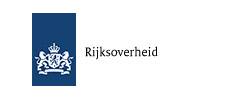The problem: international donors are still promoting pit latrines, says Dr. Claudia Wendland of Women in Europe for a Common Future (WECF), but most families can't afford to pay for safe emptying of the pits. In humid climates like those found in Central Asia, Caucasus and Eastern Europe, the latrines can become dangerous as a result, often leaking and polluting puddles in nearby streets and gardens, leaking into streams or even leaching into groundwater. Contamination ruins an already-limited clean drinking water supply, and puts the local community, particularly children, at risk for bacterial disease.
 A new and more sustainable sanitation system promises to
change the game, if advocates can generate the resources and policy action
necessary to support it. According to Sascha Gabizon, executive director of
WCEF, dry or low-flush urine diverting toilets, combined with natural filtration
ponds to purify grey water from sinks and showers, is a much safer sanitation
system that can be implemented at a cost similar to that of the latrines.
A new and more sustainable sanitation system promises to
change the game, if advocates can generate the resources and policy action
necessary to support it. According to Sascha Gabizon, executive director of
WCEF, dry or low-flush urine diverting toilets, combined with natural filtration
ponds to purify grey water from sinks and showers, is a much safer sanitation
system that can be implemented at a cost similar to that of the latrines.
One major aim of the conference was to demonstrate the feasibility of this system on a local level, and to push for legislation that supports leapfrogging to this and other sanitation systems that reuse nutrients and save water.
 According to a release from the WECF:
According to a release from the WECF:
The 200 participants of the conference were invited to visit 3 demonstration projects showing how wastewater from kitchens and bathrooms was efficiently cleaned using a "soil filter," a sealed pond in which sand and plants clean the wastewater to achieve the quality of bathing water, The participants also visited 2 different types of dry urine diverting toilets. The cost of the toilets vary between 200 and 450 Euro, including a wash facility and light, this is much cheaper than having to build a flush-toilet and connecting to a sewage system, which in most villages does not exist in any case. The cost of the soil filter for 5 people amounts to about 950 euro, also less expensive than connecting to a sewage system.
"In regions without central water supply ... they can be used without flushing water, are hygienic and safe and reuse the nutrients from urine and faeces in agriculture. Ponds and constructed wetlands are natural systems for treating wastewater in cases where flushing toilets exist," says Wendland.
 Gabizon says the WCEF strategy is to first demonstrate the
new sustainable sanitation systems "in a variety of small and large scale
applications, from households to schools to entire villages." This phase will
rely on aid funding. "However, once their efficiency and cost benefits
demonstrated, we hope that all countries in the EECCA region will join the water
and health protocol, and thus work under a common legally binding framework,
where performance based targets will be set, which would mean that pit latrines
would no longer be an acceptable solution but that a variety of other solutions
would be available. Our aim is that each household and each school or other
public building has access to a safe sanitation system."
Gabizon says the WCEF strategy is to first demonstrate the
new sustainable sanitation systems "in a variety of small and large scale
applications, from households to schools to entire villages." This phase will
rely on aid funding. "However, once their efficiency and cost benefits
demonstrated, we hope that all countries in the EECCA region will join the water
and health protocol, and thus work under a common legally binding framework,
where performance based targets will be set, which would mean that pit latrines
would no longer be an acceptable solution but that a variety of other solutions
would be available. Our aim is that each household and each school or other
public building has access to a safe sanitation system."
Photos courtesy of WCEF.
































